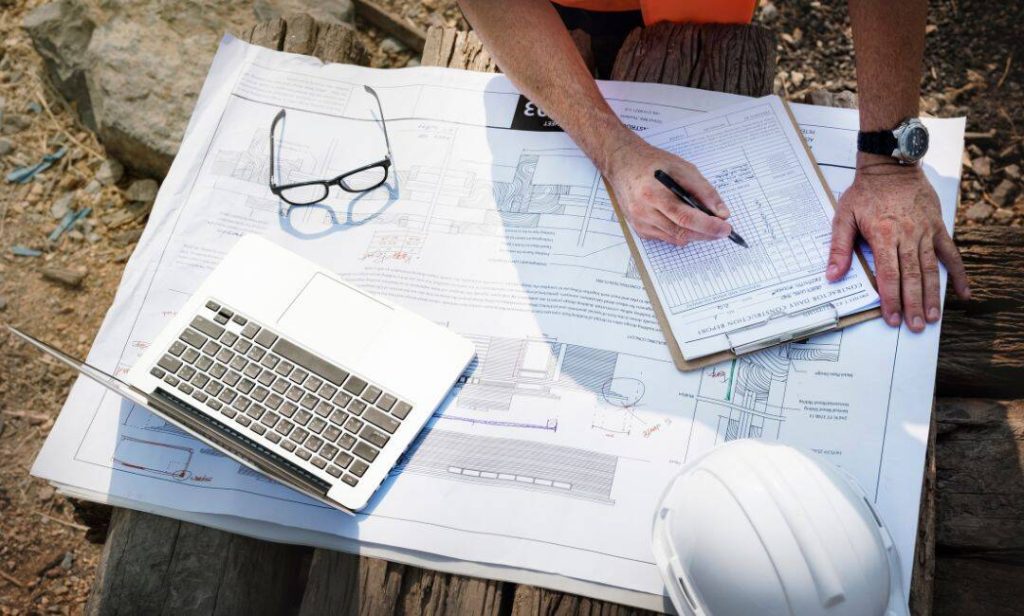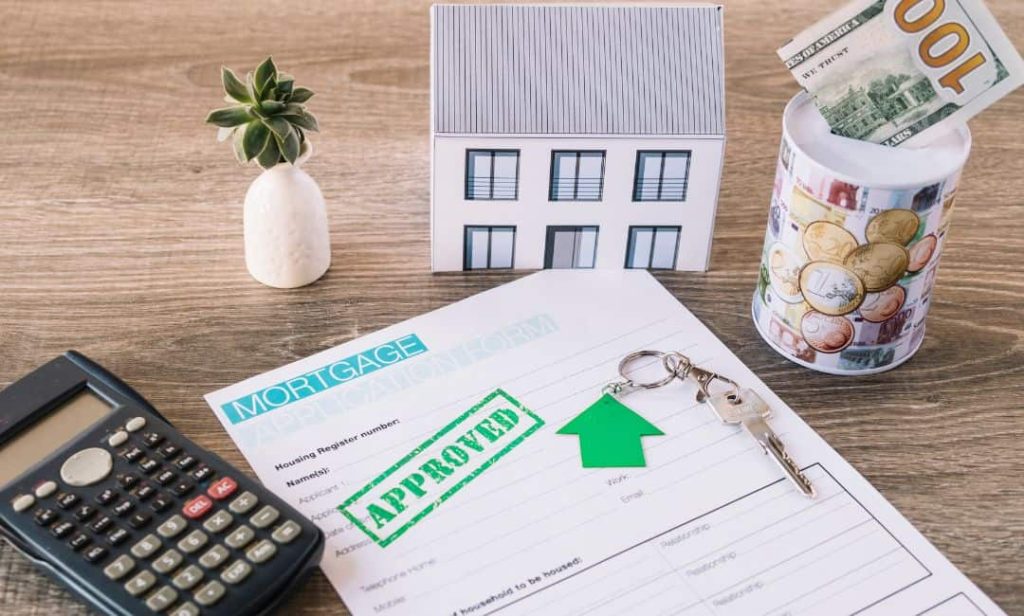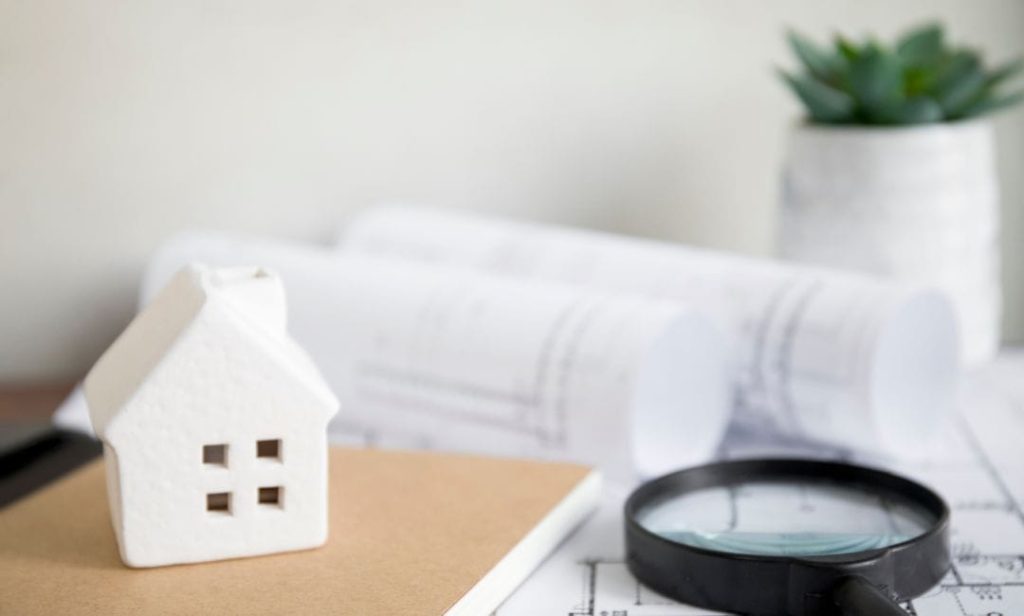
Let’s be honest — buying a home in Canada is already stressful. You’re trying to manage property showings, read through all the legal documents, and somehow keep your sanity intact. But there’s one important step that many buyers overlook — and skipping it could cost you thousands down the road. I’m talking about the property survey.
I know, it sounds boring. But here’s the thing: If you order an up-to-date land survey before closing, you take a smart step that could save you thousands later.
Why?
Because it protects you from surprise boundary disputes with neighbours, accidental encroachments, zoning issues, or future construction setbacks.
In short, it gives you clarity about exactly what you’re buying — and that kind of peace of mind is priceless.
“Skipping a property survey is like buying a car without checking the title – you might inherit someone else’s problems.” — Canadian Real Estate Lawyer
Let’s understand why a property survey matters, when you need one, and how it can save you from major headaches after you’ve moved in.
What is a Property Survey?
So, what exactly is a property survey?
It’s a detailed report created by a licensed land surveyor. It shows the exact boundaries of the land, where the buildings sit, and if there are any issues, like a neighbour’s garage on your property.
Your survey will show:
- Property lines
- Building locations
- Driveways and fences
- Easements (e.g., utility lines)
- Encroachments (buildings that cross into your land)
This document is often called:
- Land survey
- Boundary survey
- Real Property Report (RPR)
Why It Matters:
In provinces like Ontario and Alberta, mortgage lenders may require a Real Property Report before providing financing.
In British Columbia, there are special rules governing strata properties.
So, whether you’re buying a condo in Vancouver or a farmhouse in Nova Scotia, you’ll need the right type of survey for real estate deals.
When Should You Get a Property Survey? Key Timings

Here’s a question I get all the time:
“When should a survey be done when buying a house?”
Great question — and honestly, knowing the right timing can save you a ton of stress (and money). A survey for real estate isn’t just a formality. It’s your legal proof of what you own — boundaries, structures, easements, and all. So, when’s the best time to get one?
Best Times to Order a Property Survey
1. Before Making an Offer
If you’re eyeing a rural property, a large piece of land, or a place with unclear boundaries, it’s worth getting a survey done early. It gives you confidence before committing and helps you avoid buying land you can’t use.
2. During Due Diligence
This is the sweet spot — after your offer is accepted but before you close the deal. This way, you can uncover any issues (like encroachments or easement surprises) before they become your problem.
3. When Refinancing
Lenders sometimes ask for an up-to-date land survey to confirm boundaries and structures. It’s not always required, but if your current survey is outdated, your bank may require a new one before approving the refinance.
Red Flags You Might Need a New Survey
- The existing survey is more than 10 years old (rules or boundaries may have changed)
- Fences, driveways, or sheds don’t line up with what’s shown on paper
- You’re planning to build or add on a deck, garage, fence, pool, or even a garden shed
- The home has gone through subdivisions or property line changes in the past
Not Sure What to Do?
If you’re unsure whether you need a new survey for real estate, don’t guess. Talk to your real estate agent — they’ve seen it all before and can point you in the right direction.
You can also check this guide on Canadian real estate laws to understand what’s legally required in your province or territory.
Getting a survey might feel like “just one more thing” — but it’s one of the few that can save you from major headaches down the line.
Types of Property Surveys in Canada

Did you know there’s more than one kind of land survey? The type you need depends on what kind of home you’re buying and what you plan to do with it. Each survey has a different purpose and cost.
Here’s a simple overview:
| Type of Survey | Best For | Average Cost in Canada |
| Boundary Survey (RPR) | Regularly check homes, fences, and lines | $1,000 – $2,000 (can be more for big lots) |
| Real Property Report (RPR) | Mortgage approvals, legal paperwork | $1,500 – $3,000 |
| Topographic Survey | Building projects, land shape, and slopes | $2,000 – $5,000 |
| Condo or Strata Survey | Condos or apartments with shared land | $800 – $1,500 |
What does Each Survey do?
- Boundary Survey: Shows exactly where your land starts and ends. It includes fences, driveways, and buildings. Great for regular homebuyers.
- RPR (Real Property Report): Needed for mortgage or legal reasons. It proves that everything on your land follows local rules.
- Topographic Survey: Used if you plan to build, landscape, or change the land. It maps slopes, trees, and drainage.
- Condo/Strata Survey: Confirms your condo unit matches the legal layout, especially in shared buildings.
Why Costs Can Change?
Some surveys cost more than others because of:
- Property size – Bigger land costs more to check.
- Old records – If paperwork is missing, the job takes longer.
- Location – Rural or hard-to-reach places cost more.
- Extra details – Some banks or cities ask for more detailed surveys.
For complex or rural land, surveys can cost up to $6,000 or more.
Step-by-Step: The Property Survey Process
Getting a property survey might sound complicated, but it’s a pretty smooth process once you know what to expect.
Whether you’re getting a house report before buying or need a survey for legal or mortgage reasons, here’s how it usually works from start to finish:
Step 1: Hire a Licensed Surveyor
The first step in the buying a house survey process is finding a qualified surveyor.
- Make sure they’re licensed: Check with your province’s land surveyor association (like ALSA, OLS, BCLS, etc.). Only licensed professionals can legally do this work.
- Get 2 or 3 quotes: Prices can vary based on the size of the property, the location, and how complex the job is. Asking around helps you avoid overpaying.
- Ask about timelines: A typical survey takes anywhere from 2 to 4 weeks, depending on how busy the surveyor is and how complex the land is.
Step 2: On-Site Work (Field Work)
Next, the surveyor will visit the property to do the actual measurements.
- They’ll locate the original boundary markers that define your lot.
- Using special tools, they’ll measure everything — the house, fences, driveways, sheds, decks, and any other structures.
- The surveyor will also look for any issues, like buildings that go over the boundary line (called encroachments) or neighbours’ fences that are on your land.
This part is super helpful because it shows you exactly what land comes with the home. It also tells you if there are any problems to fix before you buy.
Step 3: Review the Survey Report
Once the fieldwork is done, you’ll get a detailed survey report.
- This report shows the exact layout of the property, including legal boundaries, structures, and any encroachments.
- Ensure the house, fences, and driveways are all within the lot lines. If anything looks off, ask your real estate agent or lawyer.
- Keep a copy of both digital and paper. You might need it later for renovations, permits, or when selling the home.
Reminder:
Getting a house report before buying isn’t just a box to check — it’s an important step that gives you a clear picture of the property. It also helps you avoid legal issues and make a smart, informed investment.
Understand Your Survey Report: What to Look For

Looking at a survey report for the first time can feel a bit overwhelming — all those lines, labels, and technical terms.
But don’t worry. You don’t need to be a surveyor to spot the important stuff.
Here’s what I always check first:
Key Details to Review:
1. Property Lines
Ensure the boundaries shown match the legal description in your purchase agreement. This shows exactly what land you’re buying.
2. Structures
Are the house, garage, fences, driveway, or shed fully inside the property lines? If anything crosses over, that could mean trouble — and possibly extra costs.
3. Easements
Look for anything that gives others legal access to part of your land, like utility lines or shared driveways. Easements aren’t always bad, but it’s good to know they exist before you buy.
4. Encroachments
Check if a neighbour’s fence, deck, or other structure is crossing onto your side of the line — or vice versa. This is one of the most common issues found on a house report before buying.
5. Surveyor’s Seal and Date
A licensed surveyor must sign every property survey. Make sure the seal is visible and the date is recent. If the report is too old, your lender or city might not accept it.
Pro Tip:
Compare your survey with your city’s zoning or planning map.
Why?
Sometimes there are rules about how close buildings can be to the edge of a lot. Catching zoning issues early can save you a major headache later, especially if you plan to build, renovate, or add a fence.
Property Survey Costs Across Canada

The cost of a land survey for property sale can vary depending on several factors, like where you live, how big your property is, and the complexity of the terrain.
Here’s a breakdown of what you can typically expect to pay across Canada:
Survey Costs by Province:
| Province | Average Cost (2025) |
| Ontario | $1,500 – $6,000 |
| Alberta | $400 – $800 |
| British Columbia | $500 – $1,000 |
| Quebec | $400 – $1,800 |
What Affects the Cost?
Several factors can influence the price of your property survey, and here are the main ones to keep in mind:
- Type of Survey: The type of survey you need can change the cost. For example, a simple boundary survey will cost less than a detailed topographic survey.
- Size of Your Lot: Larger properties or irregularly shaped lots usually require more work, which can make the survey pricier.
- Existing Survey Information: If the existing survey is outdated or missing, a new one will likely be more expensive since the surveyor needs to gather all the information from scratch.
Common Issues Found in Property Surveys
When I talk to new homeowners, these are the most common problems they often find in their property surveys.
It’s important to be aware of them so you can address any surprises before closing the deal.
Frequent Survey Problems:
1. Encroachments
This is one of the most common issues. It happens when a neighbour’s fence, shed, or driveway crosses over your property line. Sometimes, it’s just a small mistake, but it could cause major headaches if not addressed.
2. Easements
Easements are legal rights that allow someone (like a utility company) to access part of your property. For example, they might need to use part of your land to repair power lines or install pipes. This can limit how you use that portion of your property, so it’s good to know what you’re dealing with.
3. Discrepancies
Sometimes, the legal description of the property (like what’s on your deed) doesn’t match the actual physical measurements of the land. This could be a mistake on the paperwork or an old survey. Either way, it’s important to clear up any differences before you proceed.
Solutions to Fix Survey Issues:
1. Ask the Seller to Fix It
If the survey reveals issues like encroachments or discrepancies, you can ask the seller to fix them before you close. This might involve getting a fence moved or resolving any land boundary issues.
2. Consider Title Insurance
For added peace of mind, you might want to consider title insurance. It protects you in case there are any legal issues with the property that weren’t caught during the survey or sale process.
3. Legal Help for Major Disputes
In some cases, issues can get complicated. If a major dispute comes up — like an ongoing encroachment or unclear land boundaries — you may need legal help to sort it out.
Learn top sales closing techniques in real estate that can help you seal the deal faster and more effectively. Check out our expert tips in the latest blog!
Survey vs. Home Inspection: Key Differences

Both a property survey and a home inspection are crucial when buying a home. However, they focus on different things, so it’s important to understand what each one covers.
Key Differences Between a Property Survey and a Home Inspection:
| Factor | Property Survey | Home Inspection |
| Focus | Legal boundaries (property lines, easements) | Physical condition (structure, systems) |
| Performed By | Licensed surveyor | Certified home inspector |
| Cost | $1,000 – $3,000 (depending on size & location) | $400 – $700 (usually less) |
| Required For | Lenders (often required) | Buyer confidence (not required, but recommended) |
Why Do You Need Both?
It’s a great idea to do both! A survey will tell you where your property lines are and if there are any issues like encroachments.
But it won’t tell you if there’s mold, water damage, or a faulty roof — things you’ll find out in a home inspection.
On the other side, a home inspection will give you peace of mind about the house’s condition, but won’t tell you anything about property lines or legal boundaries.
Provincial Survey Requirements in Canada
Each province in Canada has its own specific rules when it comes to property surveys.
While the general idea is the same, there are small differences based on local laws and practices.
Here’s a breakdown of the survey requirements in a few key provinces:
1. Ontario
RPR (Real Property Report)
If you’re getting a mortgage in Ontario, a Real Property Report is often required. This shows the legal boundaries of the property and any structures or buildings on the land. It helps ensure everything is up to code and there are no legal issues before closing.
Ontario Land Surveyor (OLS)
The RPR must be signed and stamped by a certified Ontario Land Surveyor (OLS). This is important because only licensed surveyors can produce official land surveys in Ontario.
2. Alberta
“As-built” Surveys for New Homes
In Alberta, when you’re buying a new home, an “as-built” survey is often required. This type of survey shows how the property was built, including any structures, fences, and driveways, to make sure everything aligns with city planning and zoning laws.
Extra Details for Condos
If you’re buying a condominium in Alberta, the survey needs to include extra details. It’s important to show your unit, the common areas, and property lines, especially in strata-managed buildings.
3. British Columbia
Strata Surveys
In BC, strata surveys are common when buying a condo or apartment. These surveys focus on the boundaries of the individual units as well as the shared spaces within the building, like hallways, parking lots, and green spaces. They are important for understanding the limits of what’s legally yours.
Waterfront Homes
If you’re buying a waterfront home in British Columbia, you may need a tidal survey. This special type of survey helps determine the exact boundary between your property and the water, accounting for the changing tides. It’s crucial for ensuring the property lines are accurate in areas with fluctuating water levels.
Each province has unique rules to protect both buyers and sellers. Whether you’re in Ontario, Alberta, or British Columbia, it’s important to understand the local survey requirements.
This can help you avoid legal issues and make sure your property transaction goes smoothly.
Looking for reliable real estate brokerages in Canada? Our expert team provides personalized service, helping you navigate the market with confidence.
FAQs About Property Surveys
Q: Is a property survey mandatory when buying a house?
A: The law doesn’t require a property survey, but most lenders ask for one to approve your mortgage. They use it to confirm the property’s legal boundaries and avoid future disputes.
Q: How long is a survey valid in Canada?
A: A property survey can technically last forever, as the land’s boundaries don’t change. However, most banks prefer a survey that’s less than 10 years old to ensure everything is up-to-date.
Q: Can I use the seller’s existing survey?
A: You can use the seller’s survey if it’s recent and your lender accepts it. If the survey is outdated or missing important details, you’ll need to get a new one.
Q: Who pays for the survey?
A: The buyer typically pays for the survey, but you can sometimes negotiate with the seller, especially if the survey uncovers issues.
Q: Can I do my survey?
A: No, only a licensed surveyor can conduct a legal survey in Canada. Attempting to do it yourself could result in mistakes or legal complications later on.
Conclusion: Protecting Your Investment
Buying a home is one of the biggest financial decisions you’ll ever make. That’s why it’s so important to make sure everything is in order, and a property survey helps you do exactly that.
It shows you the exact boundaries of the land, any hidden issues like easements or encroachments, and ensures there are no surprises after you move in.
I always remind buyers: don’t treat a survey like an extra add-on. It’s one of the only tools that protects your money before you even get the keys.
Skipping it might save a few dollars now, but it could cost you thousands later in legal fees, disputes, or repairs.
What Should You Do Next?
Here’s a quick checklist to help you move forward with confidence:
- Reach out to a licensed surveyor in your province. Your real estate agent can usually recommend someone local and trusted.
- Set aside a budget of $1,500 to $3,000 for the survey. Prices may vary depending on your location and the size of the property.
- Review the survey report carefully with your real estate agent or lawyer. They’ll help you understand the details and spot anything that might need attention.
- Ask questions early and resolve any issues before closing day. It’s much easier to fix problems now than after the sale is final.
Want to join the best real estate company to work for in Canada? We provide a supportive environment, ongoing education, and the chance to grow your business faster than ever.






